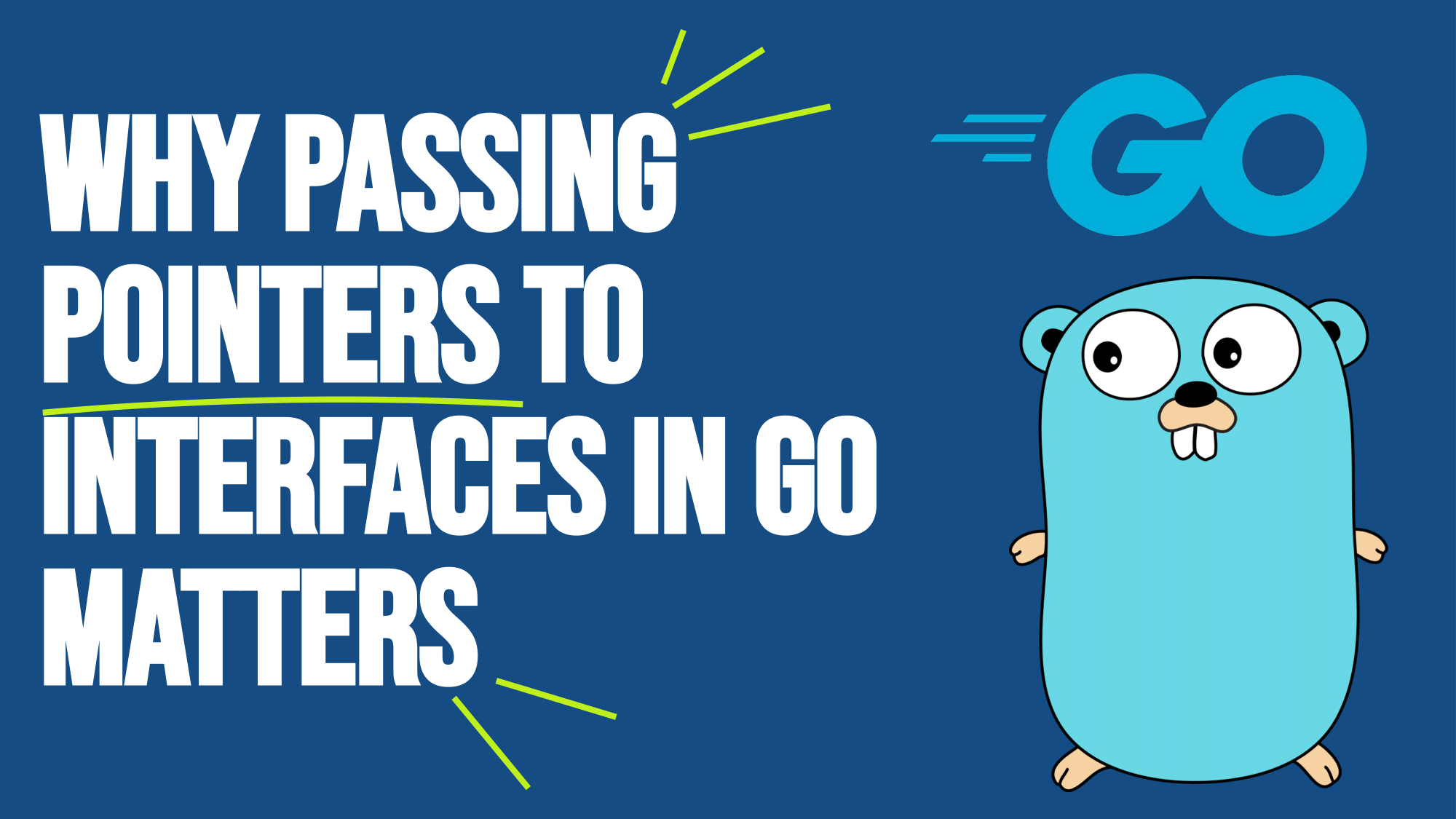Why Passing Pointers to Interfaces in Go Matters (And How It Affects GORM)

I came across this error message a few days ago when working with GORM:
1
panic: reflect: reflect.Value.SetString using unaddressable value
Encountering this error led me to dive deeper into how Go interfaces and pointers interact. Here’s to share what I learned and why this error occurs, why passing pointers to interfaces is crucial, and how to resolve such issues.
The Problem
Here’s the initial code that caused the issue:
1
2
3
4
5
6
7
8
9
10
11
12
13
14
15
16
17
18
19
20
21
22
23
24
25
26
27
28
29
30
31
32
33
34
35
36
37
38
39
40
41
42
43
44
package main
import (
"fmt"
"gorm.io/gorm"
)
type animal interface {
Type() string
SomeFunction()
}
type dog struct {
Name string `gorm:"column:name"`
Column1 string `gorm:"column:column1"`
Column2 string `gorm:"column:column2"`
}
func (d dog) Type() string {
return "dog"
}
func (d dog) SomeFunction() {
// do something
return
}
var db *gorm.DB // Assume this is initialized elsewhere
func main() {
d := dog{}
err := run(d)
if err != nil {
fmt.Println("Error:", err)
}
}
func run(a animal) error {
// Passing the pointer of the interface
if err := db.Raw("SELECT * FROM animals WHERE type = ?", a.Type()).Scan(&a).Error; err != nil {
return err
}
return nil
}
At first glance, you might think this should work. After all, we’re passing &a to Scan, and a satisfies the animal interface. However, this code results in a runtime panic. Why?
Why Passing &a Doesn’t Work
The root of the problem lies in how Go interfaces work. Let’s break it down step by step:
1. Interfaces Hold Values or Pointers, Not Both
When a (of type animal) is passed to the run function, it holds a copy of the dog struct. If you attempt to pass &a to GORM, you’re effectively passing the address of the interface itself, not the underlying value (or pointer) inside it.
2. Reflection Needs Addressable Values
GORM’s Scan function uses reflection to populate fields. Reflection requires an addressable value (i.e., a pointer to a struct) to modify its fields. In this case:
- The interface
ais not addressable. - Even though you pass
&atoScan, GORM can’t access or modify the underlying value (dog) inside the interface.
This is why you see the error reflect.Value.SetString using unaddressable value.
3. The Key Insight
The interface a is like a box that holds either a value or a pointer. Passing &a to Scan simply gives GORM the address of the box, but GORM doesn’t know how to unpack the box to access the actual dog value inside.
Fixing the Code
To solve this, you need to ensure that GORM receives a pointer to the actual struct (dog) instead of the interface. This means changing how the run function is called and ensuring the interface holds a pointer to the struct from the beginning.
Here’s the corrected code:
1
2
3
4
5
6
7
8
9
10
11
12
13
14
15
func main() {
d := dog{}
err := run(&d) // Pass a pointer to the dog struct
if err != nil {
fmt.Println("Error:", err)
}
}
func run(a animal) error {
// No need to take the pointer of `a` now; it's already a pointer to `dog`
if err := db.Raw("SELECT * FROM animals WHERE type = ?", a.Type()).Scan(a).Error; err != nil {
return err
}
return nil
}
Key Changes:
- In
main, pass&d(a pointer todog) when callingrun. - In
run, passadirectly toScanwithout taking its address.
Now, GORM receives the correct type: a pointer to the underlying struct (dog), which is addressable and can be modified by reflection.
Understanding the Fix
Why Does This Work?
When you pass &d to the run function:
- The interface
aholds a pointer to thedogstruct (*dog). - GORM’s
Scanfunction can now follow the pointer and populate the fields of the actualdogstruct.
Why Didn’t Passing dog{} Work?
When you pass dog{} (a value) to run, the interface holds a copy of the value, not the original struct. This makes it impossible for GORM to modify the fields because the copy is not addressable.
Key Takeaways
- Go Interfaces Hold Copies:
- When you pass a value (e.g.,
dog{}) to an interface, the interface holds a copy of the value. - To allow modification, the interface must hold a pointer to the original value.
- When you pass a value (e.g.,
- Reflection Requires Addressability:
- GORM’s
Scanfunction uses reflection to populate struct fields. For this to work, the input must be addressable (i.e., a pointer to a struct).
- GORM’s
- Pass Pointers from the Start:
- Always pass pointers when working with GORM to ensure fields can be populated correctly.
- Don’t Pass Interface Pointers to GORM:
- Passing
&a(the pointer to the interface) doesn’t solve the problem because GORM cannot access the value inside the interface.
- Passing
Final Thoughts
This issue highlights the importance of understanding how Go interfaces and pointers work under the hood. By ensuring that interfaces hold pointers to structs, I believe you can avoid common pitfalls when working with libraries like GORM. With this understanding, I was able to write more robust and reliable Go code. :)